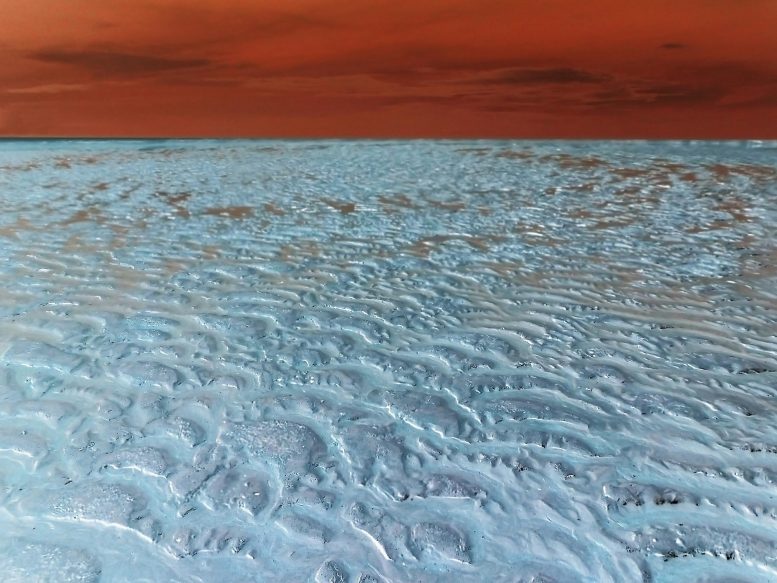
Across the globe, from Alaska to Siberia, permafrost holds more carbon than has ever been released by humans. Right now, permafrost keeps carbon safely locked away, but as global temperatures warm, permafrost thaws and releases greenhouse gases to the atmosphere.
Arctic regions have captured and stored carbon for tens of thousands of years, but a new study shows winter carbon emissions from the Arctic may now be putting more carbon into the atmosphere than is taken up by plants each year.
The study, supported by NASA ABoVE and conducted in coordination with the Permafrost Carbon Network and more than 50 collaborating institutions, was published today in the prestigious Nature Climate Change journal. It warns that winter carbon dioxide loss from the world’s permafrost regions could increase by 41 percent if human-caused greenhouse gas emissions continue on their current pace.
“High-latitude cold regions, including the Arctic, are warming more than twice as fast as the rest of the planet, with the greatest warming occurring during the winter. Given that a major process responsible for CO2 emissions; microbial respiration, increases with warming even at sub-zero temperatures, winter is a critical period for carbon cycling”, said study co-author Dr. Fereidoun Rezanezhad, University of Waterloo Water Institute & Ecohydrology Research Group member and professor in Earth and Environmental Sciences.
“We’ve known that warmer temperatures and thawing permafrost have been accelerating winter CO2 emissions, but we haven’t had a clear accounting of the winter carbon balance,” said WHRC Arctic Program Director Dr. Sue Natali, lead author on the study.
Permafrost is the carbon-rich frozen soil that covers 24 percent of the Northern Hemisphere land area. Across the globe, from Alaska to Siberia, permafrost holds more carbon than has ever been released by humans. Right now, permafrost keeps carbon safely locked away, but as global temperatures warm, permafrost thaws and releases greenhouse gases to the atmosphere. Carbon from thawing permafrost had been omitted from many models and reports that informed international climate policy.
Researchers synthesized on-the-ground observations of CO2 emissions to assess current and future winter carbon losses from the northern permafrost regions. They estimate a contemporary loss of 1.7 million metric tons of carbon from the permafrost region during the winter season (October through April). That loss is greater than the average growing season carbon uptake for this region estimated from process models (1.0 million metric tons of carbon taken up per year). Extending model predictions to warmer conditions in 2100 indicates that winter CO2 emissions could increase 17 percent under a moderate mitigation scenario (RCP 4.5) but could rise 41 percent under a business-as-usual emissions scenario (RCP 8.5).
“Considering the vast amount of land within the world’s permafrost regions, it is difficult to gauge how quickly ecosystems are changing. The research resulting from this project could inform government decision-making on climate action to see the impacts of winter warming on the export of carbon under different climatic scenarios” said Dr. Rezanezhad.
For more on this study, read Arctic Shifts to Carbon Source.
Reference: “Large loss of CO2 in winter observed across the northern permafrost region” by Susan M. Natali, Jennifer D. Watts, Brendan M. Rogers, Stefano Potter, Sarah M. Ludwig, Anne-Katrin Selbmann, Patrick F. Sullivan, Benjamin W. Abbott, Kyle A. Arndt, Leah Birch, Mats P. Björkman, A. Anthony Bloom, Gerardo Celis, Torben R. Christensen, Casper T. Christiansen, Roisin Commane, Elisabeth J. Cooper, Patrick Crill, Claudia Czimczik, Sergey Davydov, Jinyang Du, Jocelyn E. Egan, Bo Elberling, Eugenie S. Euskirchen, Thomas Friborg, Hélène Genet, Mathias Göckede, Jordan P. Goodrich, Paul Grogan, Manuel Helbig, Elchin E. Jafarov, Julie D. Jastrow, Aram A. M. Kalhori, Yongwon Kim, John S. Kimball, Lars Kutzbach, Mark J. Lara, Klaus S. Larsen, Bang-Yong Lee, Zhihua Liu, Michael M. Loranty, Magnus Lund, Massimo Lupascu, Nima Madani, Avni Malhotra, Roser Matamala, Jack McFarland, A. David McGuire, Anders Michelsen, Christina Minions, Walter C. Oechel, David Olefeldt, Frans-Jan W. Parmentier, Norbert Pirk, Ben Poulter, William Quinton, Fereidoun Rezanezhad, David Risk, Torsten Sachs, Kevin Schaefer, Niels M. Schmidt, Edward A. G. Schuur, Philipp R. Semenchuk, Gaius Shaver, Oliver Sonnentag, Gregory Starr, Claire C. Treat, Mark P. Waldrop, Yihui Wang, Jeffrey Welker, Christian Wille, Xiaofeng Xu, Zhen Zhang, Qianlai Zhuang and Donatella Zona, 21 October 2019, Nature Climate Change.
DOI: 10.1038/s41558-019-0592-8
Dr. Rezanezhad is leading more research on winter processes in Canadian wetlands, peatland, permafrost and agroecosystem through Winter Soil Processes in Transition, a Global Water Futures project and an NSERC Climate change funded initiative entitled Winter Carbon Losses in Wetland Ecosystems under Current and Future Climates.


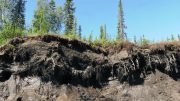
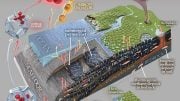
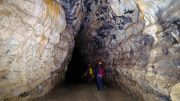
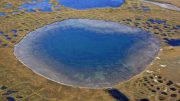
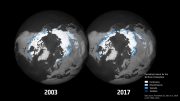
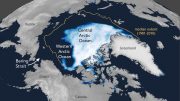
Be the first to comment on "Arctic Permafrost Turning Into a Carbon Source – Holds More Carbon Than Has Ever Been Released by Humans"